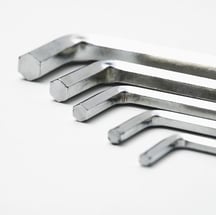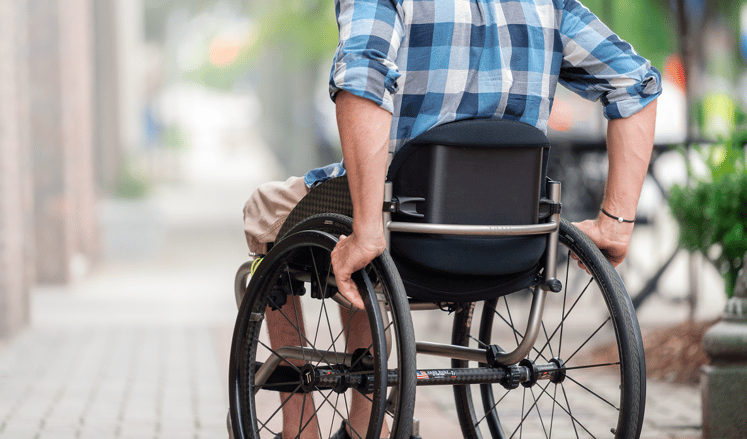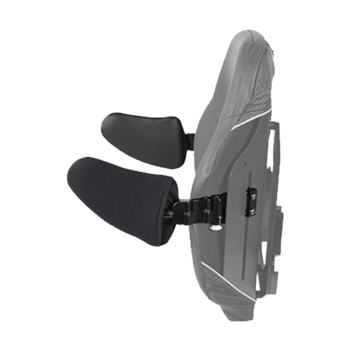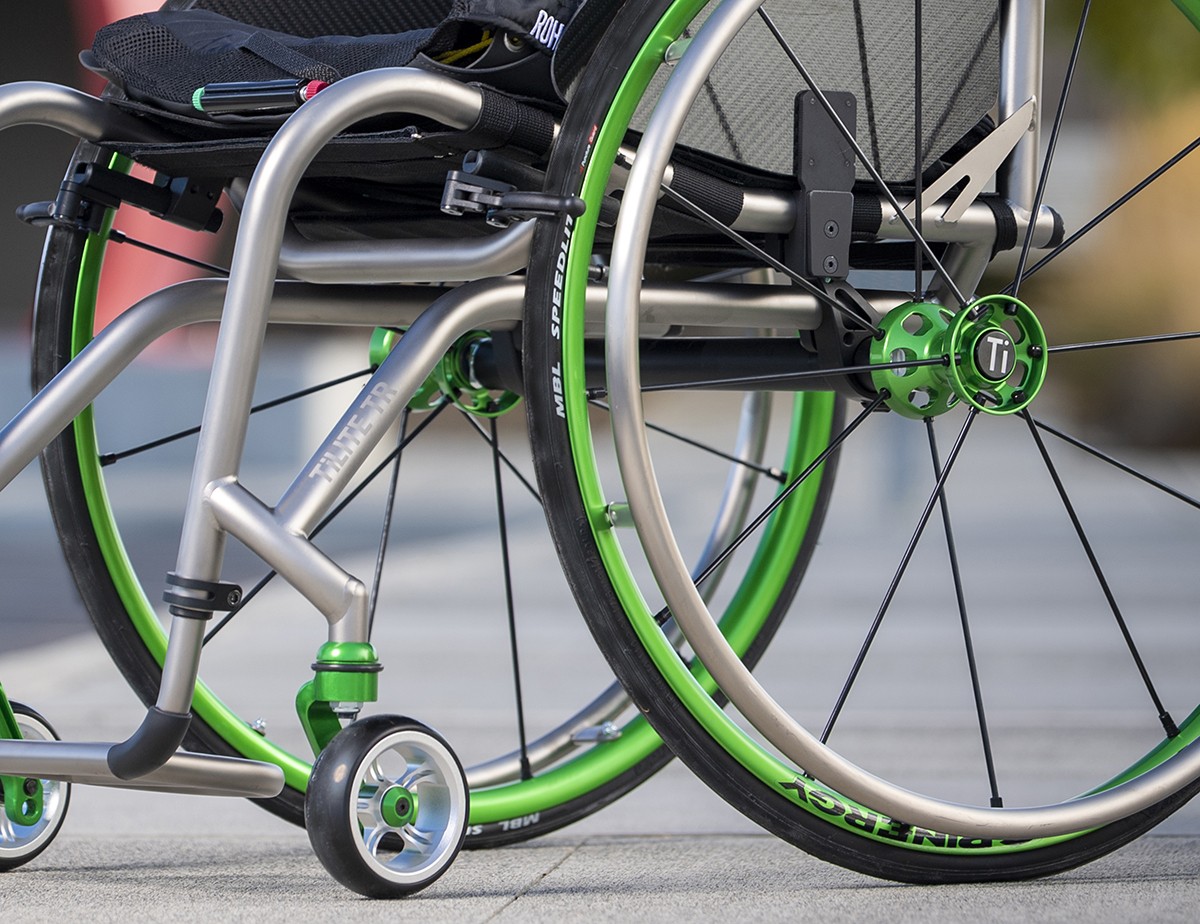I have been on the road and in the air more then I have been at home over the last couple of months. Although I have had to source a new coffee shop in each town, I have really enjoyed connecting with a variety of therapists on the ground and discussing key questions, barriers and successes they are having. A reoccurring question which both younger and more experienced therapists have asked me has been around what adjustments could they be making to wheelchairs for their clients and what tools do they need?
So, should therapists make adjustments to their client’s wheelchairs? In my opinion, it is a big YES from me. Therapists should absolutely have the skills and feel confident making a handful of minor adjustments to both manual wheelchairs and power wheelchairs whilst in the field, as small changes can have a powerful impact on seating and positing – and even mobility. Just like any of our clinical skills, wheelchair adjustments and our skill set using tools need to be learnt and developed. This being the case, where do you start?
Firstly – I would recommend that you have a small set of good tools. Now I am not suggesting you purchase the top of the line, but you do need good tools. The minimum that I would recommend you have:
- A set of individual Allen Keys (both Imperial and Metric). Individual keys instead of a set all attached to each other are much easier to use as they give you more leverage
- Spanners (8 mm, 9 mm, 10 mm, 11 mm,12 mm)
- Rubber Mallet (also known as the enforcer)
- Screw Drivers (a Flat Head and Phillips Head)



Once you have your small kit to start with, the next step I would recommend is to take them into every appointment with you. If you have them, you will be more likely to use them. Taking the first step can be tricky and sometimes a little scary – so start by assisting your rep or other therapists on a trial and start simple. When you are completing a trial or delivery, ask the rep how you can help and then get them to show you on one side. I initially built my skills by mirroring my wheelchair rep – they would make changes on one side, and I would do the other. I would also get my rep to give me a simple to task to do – such has putting brackets on back canes (and yes I put them upside and on the incorrect sides) or changing the backrest width.
The first handful of adjustments that I would recommend that you start with are the following, as they can have a significant impact on everyday posture for your clients:
1. Lower leg length adjustment:
Being able to move the footplate on any chair up or down is important for comfort and posture. If a footplate is too low for your client, you may see them sliding into a posterior pelvic tilt so their feet touch the footplate for support. Adjusting their footplate up a small amount may enable your client to sit in a more neutral position. Conversely, if your clients’ footplates are too high, they may be placing too much pressure on their ITs. Being able to lower the footplate can assist with pressure and positioning management.
2. Seat to back angle:
Ensuring that the seat to back angle matches your client’s hip ROM is important to manage pain, comfort, positioning and seating tolerance. If your client sits in a fixed posterior pelvic tilt and the seat to back angle is set at 90 degrees, this angle could contribute to a more kyphotic posture. By opening up the backrest angle by 5-10 degrees in the backrest hardware, you will be able to change the angle easily on site. Similarly, if your client only has 80degrees of hip flexion bilaterally, you would want to look at opening the seat to back angle. One way of achieving this in the field is by changing the angle of the backrest at the hardware.
3. Backrest height:
Raising the height of the backrest either up or down can have significant functional and postural impacts on a client. Changing the height of the backrest through the hardware is often easily done on manual wheelchairs and can make the difference to improve a persons push efficiency and wheel access.

4. Lateral adjustment:
Once laterals are attached to backrests, they are often simple to move up and down, and in and out. Being familiar with which bolts to loosen (never remove), can assist to improve a client’s trunk position and comfort. You may for example need to bring the laterals in/out at the end and start of winter each year. Make sure you record which bolt to loosen so that you can do the opposite at the end of the season!

5. Headrest adjustments:
Headrests are a common reason for clients to contact us as therapists to make adjustments. Before you reach for that allen key however, make sure you check your client's pelvic position and work your way up and down the biomechanical chain BEFORE you touch that headrest – as Proximal stability equals distal ability – and this is most true for a client's head position.
In summary – having the confidence and ability to make changes to a client’s wheelchair is an important skill set to have, and one which we must continue to develop. I would really encourage you to start to build a small tool kit and get familiar with your tools. Ask questions and have a go making changes to a set up with your rep during a trial or delivery. I also loved getting my hands on an old manual wheelchair and taking it apart one section at a time and putting it back together. Just as we do in other parts of our practice, have someone check your work and find opportunities to practice. My last piece of advice is, don’t take or change a chair on a Friday afternoon!
If you are not sure where to start, do not hesitate to reach out to the Clinical Services team at education.au@permobil.com

Tilly Brook
Clinical Services Specialist
Permobil APAC
Tilly Brook graduated from the University of Adelaide in 2008 with a Bachelor of Health Science followed by a Masters of Occupational Therapy (Hons) in 2010 from the University of Sydney. Tilly worked within rehabilitation, working primarily with adults with a brain injury until 2015 when she moved to Singapore. In Singapore, she worked with children and adults at the Cerebral Palsy Alliance School (CPAS). In 2017 Tilly’s clinical knowledge continued as she worked with Mobility Solutions in Auckland, New Zealand. On her return to Australia, Tilly assisted in the development of the Clinical Hub Team at Sunrise Medical where her passion and experience for mentoring and educating therapists grew. Tilly Joined Permobil in January 2022 and is driven to grow therapists, enabling them to be the best therapist they can be.
